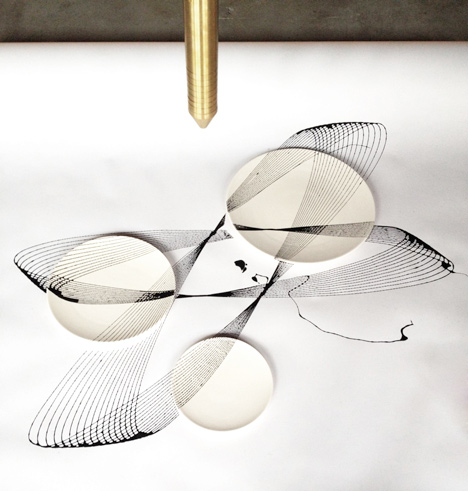Patterned plates decorated using a pendulum
Rotterdam designer David Derksen has decorated a set of plates by employing the oscillations of a pendulum to drip patterns of paint (+ movie).
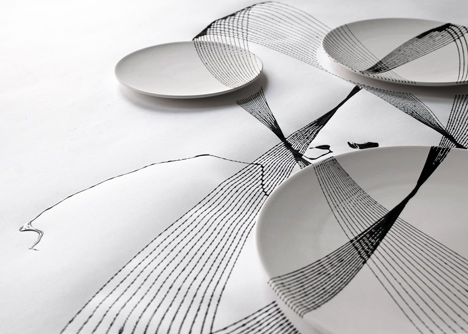
The patterns on Derksen's prototype Oscillation Plates were created using both the mathematical shapes of the pendulum's swing and the human element of positioning and initiating the movement.
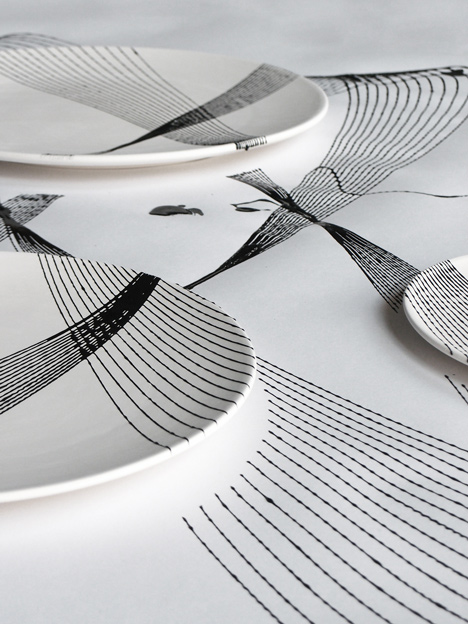
"A beautiful pattern that is formed under the influence of gravity, which is normally hidden, is now literally shown," Derksen told Dezeen. "On one hand it follows the mathematical laws of gravity, on the other hand it is very playful."

The designer created the brass pendulum so it could hold and drip the right amount of paint. "We had to adjust the size of the hole to the viscosity of the paint, to create a nice thin, constant paint flow," he said. "It also needs to have enough mass for making a constant oscillation."
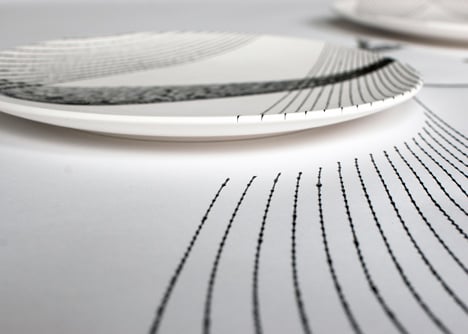
The pendulum contained enough acrylic paint to decorate one set of plates. After the first push, the pendulum released a constant flow of black paint onto the surface of the plates in overlapping oval shapes.
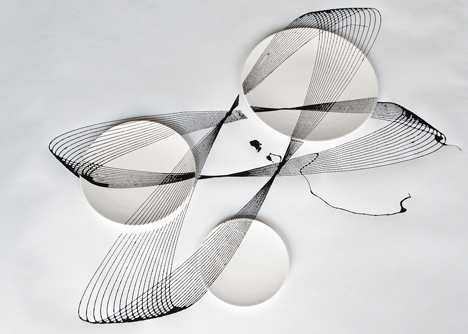
Every rotation added to the pattern, creating criss-crossing lines and darker areas where the pendulum changed direction. The position and swing orientation was then changed for a second round, then the plates were left to dry.
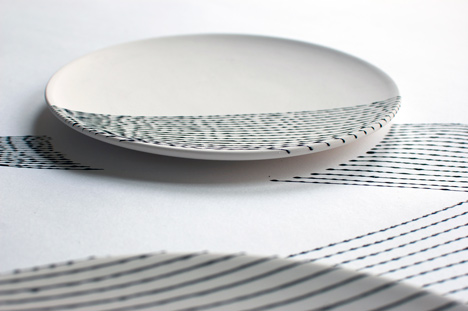
The plates are to be developed by a ceramic specialist and made available for the VIVID Gallery in Rotterdam.
Here is some more information from the designer:
Oscillation Plates
With gravity as the acting force, these plates are decorated by a pendulum. The patterns are a graphic representation of the oscillation of a pendulum, revealing a hidden pattern that exist in nature.
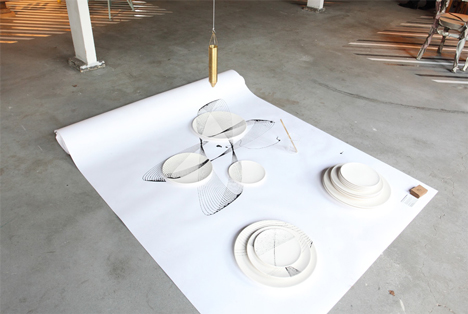
The result is a play between the mathematical rules of the natural oscillation and the randomness of the human that initiates the swing of the pendulum. This combination makes each plate unique.
